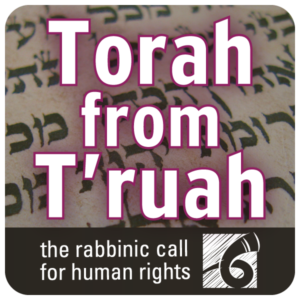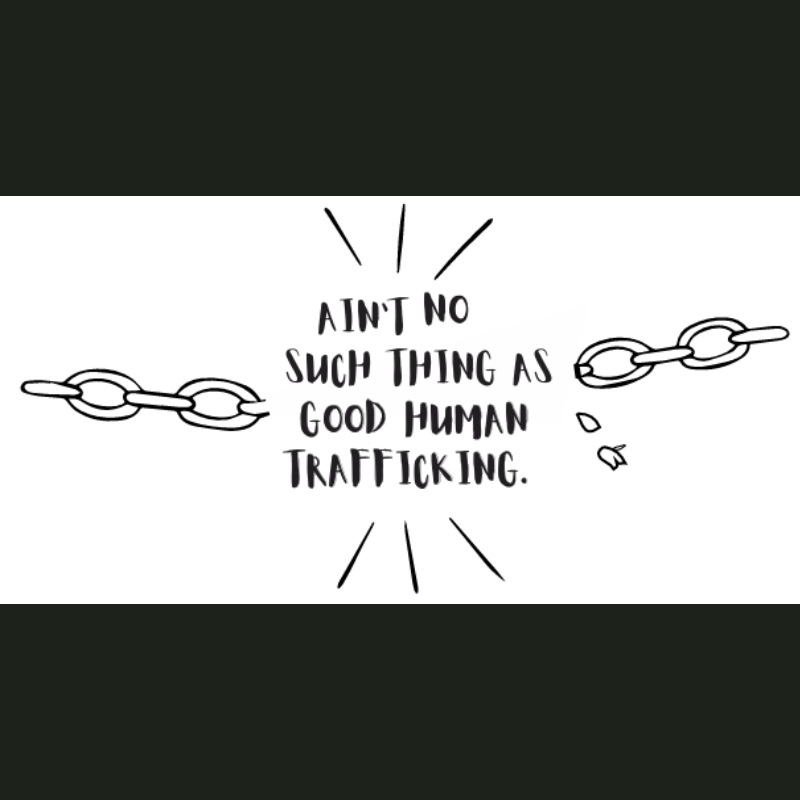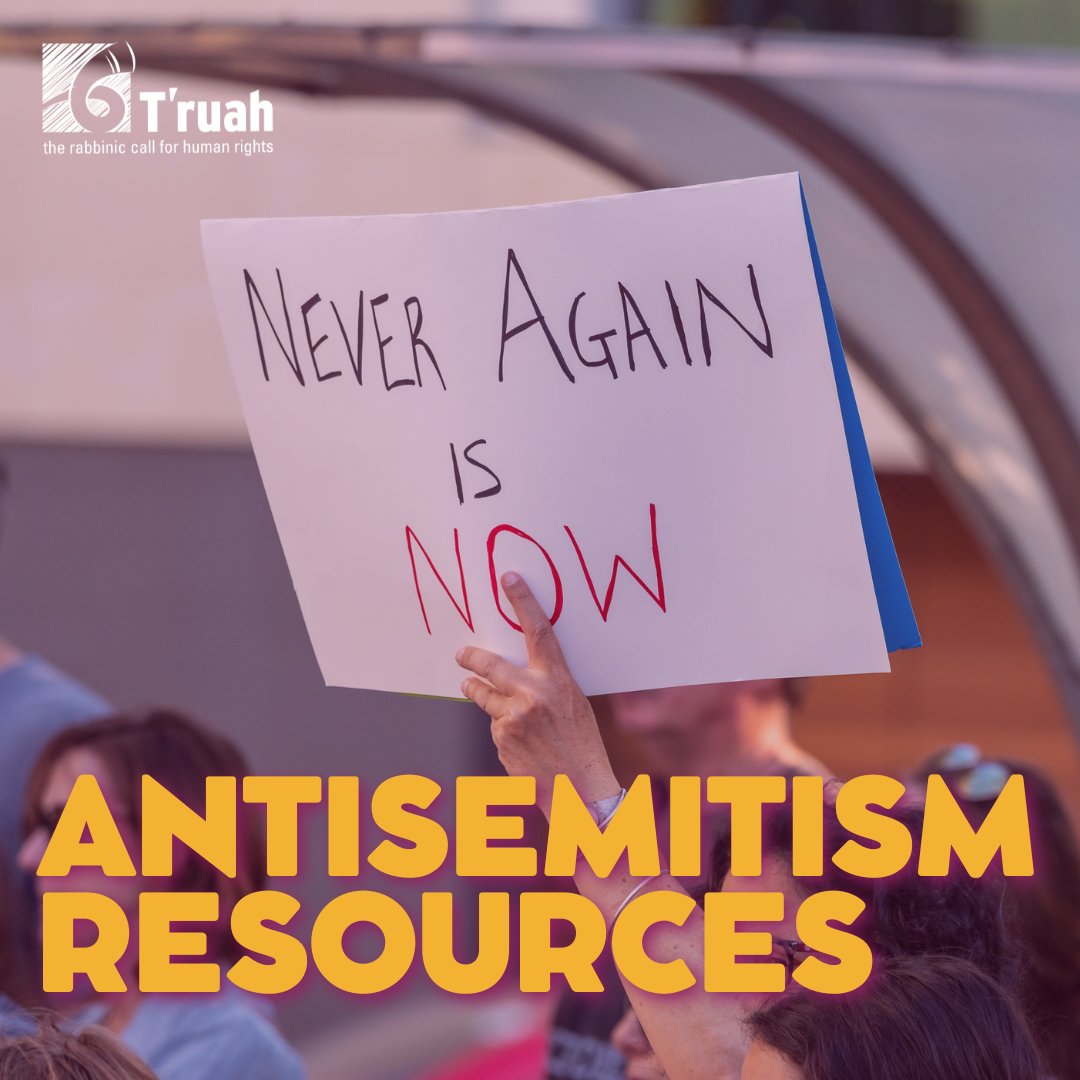Resources

Feasting on Choice, Dining with Dignity (Parshat Beha’alotecha)
We all crave food – but equally, we crave the dignity of being able to choose what, how and where we eat.
more


When Ignorance Brings Words that Sting: Finding Guidance in the Priestly Blessing (Parshat Naso)
Commentary on Parshat Naso (Numbers 4:21 – 7:89) Here in DC, the last couple of months have been pretty rough. In March, DC City Council member Trayon White claimed that the Rothschilds control the weather and the government, and then ducked out early from a tour of the U.S. Holocaust Memorial Museum that had been...
more

Stop Torture Now: A Complete Rabbinic Sourcebook
This is T’ruah’s primary resource booklet on government-sponsored torture, originally published in 2005. It includes the shorter versions of Rabbi Melissa Weintraub’s articles on torture and Jewish law, insertions for High Holidays services, materials for study and discussion, and the original public letter to the Bush Administration, signed by over 800 rabbis and cantors. The full-length versions...
more

Poor People’s Campaign Resources
From May 14-June 22, 2018, the Poor People’s Campaign: A National Call for Moral Revival launched 40 days of “nonviolent moral fusion direct action,” calling on our country to change course on the deep moral crises that threaten our democracy and our survival. T’ruah supported the campaign in a variety of ways, including by publishing...
more

Every Person Counts? (Parshat Bamidbar)
Commentary on Parshat Bamidbar (Numbers 1:1-4:20) Our Torah portion opens with the taking of another census of B’nai Yisrael – the Children of Israel – this time “listed by their clans, ages 20 years and up, all those in Israel who are able to bear arms…” (Num. 1:2) This is census number three since the...
more

A Yovel for the Poor People’s Campaign (Parshat Behar/Bechukotai)
Commentary on Parshat Behar/Bechukotai (Leviticus 25:1 – 27:34) One week from today, Monday May 14, the Poor People’s Campaign: A National Call for Moral Revival will launch across this country. As I prepare for this momentous event, I’m struck by the alignment of Torah and sacred season. This Shabbat when we read of the yovel...
more
Israel at 70 Resource
In recognition of Israel’s 70th birthday, we have created a resource to try, in a condensed way grounded in Jewish tradition, to reckon with the fullness of what 70 years means for the Jewish state. This resource brings the voices of four rabbis, commenting, as if on a page of Talmud, on four verses from...
more

Sickness and Sin (Parshat Tazria)
Commentary on Parshat Tazria (Leviticus 12:1-13:59) In the world of Tazria, scaly, raw, and oozing pustules called tzara’at erupt on the skin and spread impurity through the camp. Those who suffer from this illness are isolated. The word used in Leviticus to describe this skin ailment is nega, which specifically means a plague sent by...
more

Kedoshim: Love the Stranger as Yourself
On a recent Sunday, I was invited to preach at a neighboring Episcopalian church. This church is unusual in that its members are a mixture of English and Spanish speakers. The vast majority of the Spanish speakers are undocumented immigrants and their children. My congregation has been working with this church community to support and, if...
more



